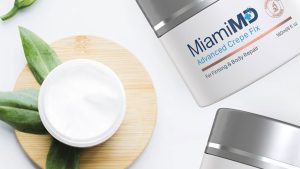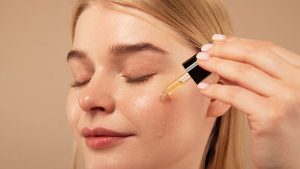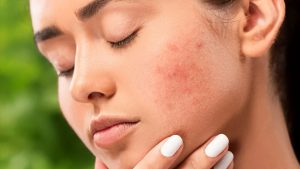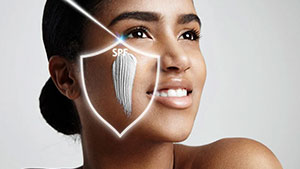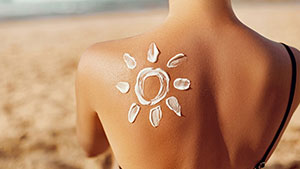Dealing With Congested Skin

Everyone is familiar with nasal congestion, but did you know that you can develop congested skin as well? If you didn’t, you’re in good company!
Unfortunately, not knowing about congested skin doesn’t stop it from happening. Instead of suffering with skin that doesn’t look the way that you want, Miami MD is here to help you clear the congestion so that you can reveal your the brightest, most beautiful skin possible.
What Is Skin Congestion?
Skin congestion is a little bit different from the typical nasal or chest congestion, although the basic premise is the same. In general, congestion is a back up or accumulation of something (like fluid) that works to “clog” that part of the body.
With skin congestion, instead of fluid, the skin is dealing with a build-up of debris in the pores, which includes various things like dead skin cells, sebum (oil), sweat, and other impurities.
While these are all normal components commonly found on the skin, if they are unable to be cleared out, it can also lead to complications. Even though the complications aren’t dangerous on a medical level, they can lead to negative aesthetic changes to the skin that may make you feel self conscious.
How Can I Tell If I Am Dealing With Congested Skin?
One of the easiest ways to be able to tell if you’re dealing with congested skin is by simply touching it. Just gently run your fingertips over the surface of your skin, and pay attention to how it feels.
Does it feel smooth? Do you notice that your skin is rough or bumpy?
Now pay attention to the way that your skin looks under bright light. It is often most obvious around the nose and chin, although congested skin can occur anywhere on the face (or even the body as a whole).
Skin that appears dry, dull or is experiencing blackheads is often congested.
What Causes Congested Skin?
Congested skin can actually be caused or triggered by a variety of different factors. Each of these factors works against the natural beauty of your skin in different ways, but the end result is the same.
One of those factors is dehydration.
Dry, dehydrated skin leads to different cosmetic symptoms, like an increase in fine lines and wrinkles. It can also be excessively itchy, and can crack, flake, or even burn. Our skin needs water to look and perform at its best, both from the inside and the outside.
Unfortunately, that also means that skin can lose water due to both external and internal factors, like whether you drink enough water or chronic sun or wind exposure. This is part of what makes congested skin so tricky… the things that contribute to it are complex and multifaceted.
Overproduction of sebum (oil) can also be a factor. Our skin needs some sebum to function properly, as it helps to form the protective part of the skin known as the skin (or moisture) barrier.
Without it, the skin is far more prone to dry out or be susceptible to environmental factors like microbes that can trigger acne. However, if the skin starts to produce too much sebum, it can also build up in the pores and cause them to clog.
Your cleansing routine can also lead to congested skin. If you’ve been lax about your routine, or even just using the wrong products, it can contribute to all sorts of different skin related issues.
At the bare minimum, you’ll want to make sure that you’re thoroughly removing all of your makeup at the end of the day, using a cleanser that works with your skin, and choosing a moisturizer that won’t clog your skin.
Your skin care products should work with your skin, not against it.
A final factor that can cause congested skin is regular touching of the face. Although we don’t like to think about it, we come into contact with germs with every single thing that we do.
No matter how much you wash your hands, every time you touch your face, those germs are transferred from your hands to your skin and can lead to acne and other skin issues.
What Are The Complications Of Skin Congestion?
The more debris that builds up in the pores, the more likely it is that you will suffer from some of the cosmetic complications of congested skin.
Blackheads are often the most common issue that results from congested skin.
They are formed when the opening between the hair follicle and the surface of the skin gets clogged with sebum and dead skin cells. When that material touches the oxygen in the air, it “oxidizes,” which is what causes it to look black in color.
Blackheads are most commonly found on the chin and the nose, but they can be found all over the face.
Congested skin can also lead to a dull, uneven skin tone. When the top level of the skin gets clogged and congested, it doesn’t turn over as frequently as it should. Instead of showing off fresh, healthy, radiant skin cells, the skin looks dull and patchy. It may even look shiny from excess oil production, but not in a way that creates a “glow.”
How Can You Open Up Congested Skin?
To open up congested skin, you need to treat the symptoms.
If you’re experiencing blackheads, the key is products that can help exfoliate the skin.
Exfoliation can be either chemical (like glycolic acid) or manual, but it should be used in moderation. Too much exfoliation can actually backfire and cause more issues with the skin, like redness or sensitivity.
You’ll want to aim for no more than two or three times a week, at the most.
When used properly, exfoliation can help clear out the plugs in the pores. While it may be tempting, don’t squeeze your blackheads. Not only does squeezing your blackheads increase the risk of infection, it also doesn’t help as much as most people think it does.
Making sure that your skin stays moisturized is also essential to not only opening up congested skin but keeping it hydrated. An all over moisturizer is a good idea, especially one that will not clog your pores.
Targeted serums, like Miami MD’s Intensive Eye Repair Serum, are also helpful.
The eye area is probably the most delicate, sensitive part of the face, and it needs to be treated differently than other areas. It’s also an area that tends to show the signs of aging a lot sooner than the rest of the face.
Face masks can also be helpful to help clear out the pores and reverse congested skin. Using a mask with exfoliative properties that can also help keep the skin hydrated is best, followed up with skin care products that help support the skin instead of clogging it and drying it out.
Just make sure that you’re not using them too frequently.
What Else Can You Do To Prevent Congested Skin?
In addition to skin care, there are a few other ways that you can work to prevent your skin from becoming congested.
While touching your face is a factor in congestion, other things that touch your face can also play a part. Think of everything that may come into contact with your face during the day.
Towels, sheets, makeup brushes… anything that touches your face can transfer dirt and bacteria to it as well. It’s important to not only wash them regularly, but also to wash your hands before you touch them.
It’s also essential that you tackle hydration from the inside, as well.
Most of us don’t drink enough water during the day. When combined with the fact that we also tend to drink caffeine, which is a natural diuretic, our bodies are likely always existing at or near a state of mild dehydration.
Drinking enough water, which should be at least four to six cups a day according to most researchers, is a good start.
Your diet can also contribute to congested skin. If you eat a diet that is high in sugar or simple carbohydrates, it can trigger the body to produce more sebum. Aim for a diet that is full of fresh fruits and vegetables, and lower the amount of processed foods that you eat on a daily basis. This can also add to the amount of natural hydration, too.
In Summary
Congested skin happens far more frequently than most people know, although the symptoms are right there in plain view. Blackheads and dull, uneven skin are some of the most obvious issues associated with skin that is dealing with congestion.
Luckily, when you know what to do about it, you can use the right products, like Miami MD’s line of functional skin care products and other lifestyle changes to turn your skin around, starting today.
Sources:
Dry skin: Diagnosis and treatment | American Academy of Dermatology Association
